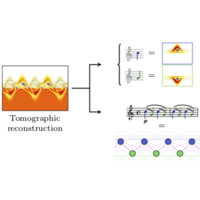A new approach could make it possible detect the elusive Unruh effect in hours, rather than billions of years.
Since the 1970s when it was first proposed, the Unruh effect has eluded detection, mainly because the probability of seeing the effect is infinitesimally small, requiring either enormous accelerations or vast amounts of observation time. But researchers at MIT and the University of Waterloo believe they have found a way to significantly increase the probability of observing the Unruh effect.
Rather than observe the effect spontaneously as others have attempted in the past, the team proposes stimulating the phenomenon, in a very particular way that enhances the Unruh effect while suppressing other competing effects. The researchers liken their idea to throwing an invisibility cloak over other conventional phenomena, which should then reveal the much less obvious Unruh effect.
If it can be realized in a practical experiment, this new stimulated approach, with an added layer of invisibility could vastly increase the probability of observing the Unruh effect. Instead of waiting longer than the age of the universe for an accelerating particle to produce a warm glow as the Unruh effect predicts, the team’s approach would shave that wait time down to a few hours.
The Unruh effect is also known as the Fulling-Davies-Unruh effect, after the three physicists who initially proposed it. The prediction states that a body that is accelerating through a vacuum should in fact feel the presence of warm radiation purely as an effect of the body’s acceleration. This effect has to do with quantum interactions between accelerated matter and quantum fluctuations within the vacuum of empty space.
To produce a glow warm enough for detectors to measure, a body such as an atom would have to accelerate to the speed of light in less than a millionth of a second. Such an acceleration would be equivalent to a g-force of a quadrillion meters per second squared (a fighter pilot typically experiences a g-force of 10 meters per second squared). (ScienceDaily)
The work has been published in Physical Review Letters.




